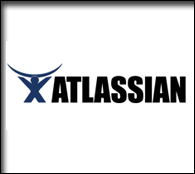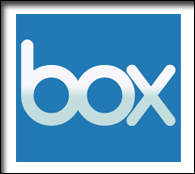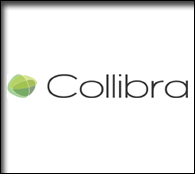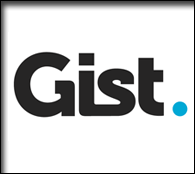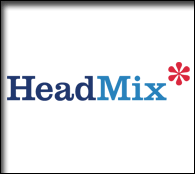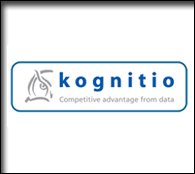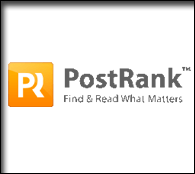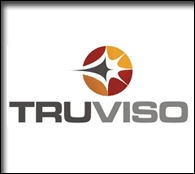Archive for June, 2008
Cleaning up and reflecting a bit
by Eric Norlin on Jun.27, 2008, under conference topics, general
Today’s my end of the quarter (essentially), so it is a day for cleaning up and reflecting prior to being “outta here” for a bit.
It has been an especially good quarter for Defrag. Our list of sponsors is looking awesome, and we’ve inked some great partnerships with the folks from Saugatuck, Forrester and Read/Write Web (just twitter-announced today).
My plan with this post was to do a bit on “how defrag is different” -something I like to do once or twice prior to the event. But, because of my mood or the weather (cloudy), or something, I’m just not feeling it (it seems a little too “in your face” for me today - and I’m normally a very “in your face” kind of person). So, random thoughts:
1. As I’ve been saying, we will not be loading you down with a traditional “conference bag” at Defrag. Yes, we’ll have something to contain the few handouts we’ll have, but the truth is that I don’t believe in printed show guides (they’re simply a WASTE), and I know that most conference bags end up in some dark hole in the corner of a closet in your house (another waste).
2. I’m always a bit amused when I tell potential sponsors that Defrag is literally run by my wife and myself. I either get the “oh that’s great,” or the “really?” response. I’ve never had one person doubt our ability to pull it off (we have history proving we can), but I have had several folks ask me why “conference companies” need teams of people to run conferences of similar size. Now, in one sense, I know why — because those teams are usually running more than one event (sometimes dozens). In another sense, I’m still a bit confused. A conference is a LOT of work (don’t get me wrong) to pull off well, but for shows 500 and under, it really is possible to do it with two people (Chris Pirillo and Ponzi come to mind). The only real caveat is that A) the two people have to know what they’re doing (experience) and B) at least one of those people has to both love selling and love the content focus.
3. I’m really looking forward to digging in on the content side. Honestly, I’ve kind of been waiting a little longer this year because I wanted to see what other conferences (focused on similar areas) were talking about - and then zag where they zigged. I recently had someone comment on how our content all seems very “high level” and a bit amorphous in title. My gut response was that yes, it does — for a reason. I know that our attendees would rather go to a session on “knowledge networking and ambient intimacy” to discover what the hell we’re talking about, than hear about “measuring engagement in social media” (ie, topics they know about already).
4. A bit on attendees: for us, that’s a misnomer. I’ve tried to explain to sponsors how engaged our audience really is. I’ve not done a good job of it. Attendees are actually participants — I demand it. If you want death by powerpoint, please go register for some other conference. If you want to converse, inform, pitch in, learn, laugh and be dragged in unexpected directions, then we’re the conference for you.
5. Wifi: the never-ending subject of “wifi sucking at conferences” keeps coming up. Good wifi at a conference is not hard. It is simply a matter of dollars spent. Trust me, Defrag will have *great* wifi this year (last year, our wifi received a standing ovation on morning 2).
6. Topics I’m excited about: 1) Finding serendipitous information through context; 2) Fixing foundational information channels (email, calendars, rss); 3) Pulling the thread on user data (implicit and otherwise); 4) dealing with unstructured vs. structured data; 5) strategic intuition (*how* it is that great decisions get made - and how that relates to defraggy topics). And so much more….those are just the ones I’ve been working on.
7. I’ve been thinking about two things Seth Godin blogged about recently: A) having pre-signed up for “discussion tables” that force people into some uncomfortable social meeting spaces, which I know they’ll thank us for later; B) how to arrange the keynote seating so that we’re not simply “row after row” -and give the room maximum energy (I’m not sure I’ll solve this one, but I’m thinking - and open to ideas).
8. One goal I’m striving for: breaking out of the echo chamber, I’ve heard it all before at the 1 million other tech conferences box. I’m digging digging and digging to find interesting people that we don’t normally get to hear from (or ones that we do hear from put into different settings and angles). You should come away from Defrag going, “wow, I never expected to hear, learn, talk about X.” This was embodied last year by David Weinberger opening the conference with a poem by Rilke. Here’s what you won’t hear: the same old valley folk talking about funding the next great innovative google-killer (ugh). [sidenote: okay, maybe that was a bit in your face.]
9. It occurred to me that I emailed with or talked to nearly every Defrag attendee prior to last year’s conference. Why? I’m not sure. I guess I really do wanna know what people are looking for prior to getting there. Bottom line: I don’t just want “buts in the seats.”
10. The next three months are going to be really exciting as we ramp toward a true agenda and the communal involvement picks up. As always, be in touch (enorlin AT mac.com).
11. Lastly a big “thank you” to everyone that’s been involved so far. I’m very fortunate to have two partners (brad and phil) that listen, push, advise and joke with me on a regular basis about how to really achieve quality (easier said than done). Beyond Brad and Phil, the sponsors I’ve interacted with so far have been incredible, and the notes, registrations and blog posts from attendees and speakers is really what keeps us going. Finally, a big quarter end “thanks is not enough” to my wife, Kim. When I say that everything good that happens at Defrag is a direct result of her, and every mistake that happens there is a direct result of me, I mean it.
If you’ve ever had the experience of loving your times at a neighborhood, family-owned restaurant (vs. Chili’s or TGI Fridays) -well, that’s what we aim for Defrag to be…..I can’t wait for next quarter…
An evolution of definition
by Eric Norlin on Jun.18, 2008, under conference topics, defrag "theory"
I’ve started to see some articles surface that are highlighting the problem of “defining enterprise 2.0.” I’m more than sympathetic to attempting such feats. Back when we started Digital ID World, “digital identity” was such an out-there concept that for the first two years of the conference, every single presentation (no joke - EVERY SINGLE PRESENTATION) began with the presenter telling us *their* definition of digital identity. Needless to say, it got tiresome — and actually, one of the ways we knew that digital identity was getting real was in year three when no one felt the need to define it any longer. That’s my “free tip of the day” to the enterprise 2.0 crowd. Measure adoption by a lack of need to define.
That said, we’ve long used a pretty fluid idea of what we mean when we say “Defrag” (the conference), so I thought it might be useful to review the “evolution”:
1. It all started with that guy named Feld. Brad was posting about an investment theme he was figuring out and he was struggling with what to call it. It went from “intelligence amplification” to some other things I forgot to “the implicit web.” The core idea, though, remained the same: we have a problem of “information overload,” and we need better tools for dealing with it.
Brad’s initial blogging A) led to us starting Defrag, and B) (importantly) insisted on crossing the enterprise-consumer barrier. This was not simply “collaboration” or “productivity,” rather it was a bigger problem that ended up (we discovered) encompassing those two things.
2. The second iteration of Defrag (the idea) happened as I started to talk to people about this new conference we were launching. I needed an analogy to help explain things. The one that stuck (if badly) was the “brainstorm.” Roughly: what we’re doing with the internet is recreating the brainstorming session. We’ve handled co-location (physical space) and simultaneity (time), and we’re even working on who’s in the room (identity), but what we haven’t done yet was develop tools that helped us (as individuals and groups) turn data into knowledge at a faster pace. We needed to get some *velocity* on the process of insight. This analogy led directly to the tagline you see on Defrag today: Accelerating the “aha” moment. (For those of you interested, the original tagline for Defrag was “assembling the disparate bits.”)
3. The third iteration of Defrag occurred between the launch of the conference and ran through the conference itself. It was a communal process of part self-identification and part-critical thinking. At the end of it, we discovered that a bunch of themes related to Defrag: the attention economy, the semantic web, enterprise 2.0, web 3.0 (ugh), information overload, the implicit web, social networking (especially in the enterprise), even knowledge management and search.
That iteration has not led us to some concrete definition. Rather it helped me to write this overly-broad statement: “As online data is growing and fragmenting at an exponential pace, individuals, groups and organizations are struggling to discover, assemble, organize, act on and gather feedback from that data. In the largest sense, we’re all looking to augment the pace at which we achieve insights on raw data — to acclerate the “aha” moment. ”
You see? It doesn’t *quite* capture it.
4. We’re standing now in the fourth iteration - what I’d call the iteration of intersections. What we know is that we have this really big problem. We can define that problem as “information overload” broadly, but even that might miss the mark slightly. The problem actually gets highlighted by putting a bunch of terms on the board and letting a Venn diagram overlap to outline what we’re talking about. Those terms, then, include: the implicit web, enterprise 2.0, semantic web, collective intelligence, (social) networking in the enterprise, next-level discovery and some others I’m probably forgetting.
Let me be clear: Defrag is not about being all things to all people. There are some technologies that simply don’t apply. We’re not trying to be the big-tent circus of web 2.0 that brings everything under one roof (not that that’s bad, that’s just not us). What we are trying to do is bring together disparate parties that might not necessarily see themselves as working on the same problem, and get them to see that “aha” — maybe so.
Its a big, nasty, hairy, meaty problem - and it generated a lot of really good stuff last year. We’re gonna do it all again, so I hope you’ll contribute to the conversation and join us.
As a bonus, Read/WriteWeb is writing about the problem today, and we’re reading. ![]()
Foundational Information Overload Channels and Flow
by Eric Norlin on Jun.16, 2008, under defrag "theory"
I woke up this morning thinking about the “foundational information channels”: email, calendaring, RSS readers, flow applications (twitter). I’m placing those in contrast to foundational infrastructure (our network of contacts, digital identity, etc) - where “social networks” cross the boundary of platform and application (channel).
In that context, I came across two blog posts: One from Brad on email overload and one from Pete on calendar silos. Both are highlighting “problems” with our foundational channels of information. Now, like Brad, email is my primary communication hub and I’m a “zero inbox” guy. And, like Pete, I get frustrated by the silo’d nature of nearly everything (and that includes calendars.
All of that leads me to the idea that maybe we need to focus on some of these foundational channels (applications) for a while. Simultaneously, though, I’m absolutely enthralled with things I hear Stowe Boyd talking about — specifically the idea that there isn’t an information overload, so much as there is an information “flow.” Its then our imperative to get in the flow of things.
I can’t explain this nearly as well as Stowe can, but I think the basic idea gets illustrated really well by an example. Email, traditionally, treats information as a discrete chunk (object) to be acted upon: read, respond, follow-up, take further action. We know this because email threads have long been known to be an incredibly inefficient way to move any project forward. The whole idea of flow (as I’ve read from Stowe) is that if something important is out there, it will find me. Now, obviously, we have a need for both. But I think there’s something deep inside of what Stowe’s saying that could help us to really rethink how we envision email and calendars; something metaphorical; something that would reshape our whole ethos around those tools.
I haven’t got a hold of that yet, but I’m hoping to flesh that out via the Defrag agenda (interestingly, I have a call with Yori over at Timebridge tomorrow about some of these issues).
I suspect the nugget that’s there reveals not only a reshaping of the metaphors behind email and calendars, but it leads to a deep ability to bring “business intelligence” tools to bear on how we deal with the “flow.” Yep, I’m envisioning something that combines semantic stuff, tagging, social networking and discoverability into an ability to not slow the flow, but harness the sheer energy of it.
Does that sound just silly? Eh, maybe — but we’re all working on it. ![]()
Miscellaneous Defrag Thoughts
by Eric Norlin on Jun.12, 2008, under general
You ever have one of those days where you want to blog, but you have no idea what you want to blog about? Yep, that’s me today; risking blogerrhea.
I guess that my basic problem is precisely why we started Defrag: information overload. So, I could ramble on about just how wonderfully things are going over here at Defrag (they are), but I’m assuming that you probably don’t want to read about that.
All of that preamble leads me to the dreaded, but sometimes useful, “list post.” Miscellaneous morning observations:
- Despite all of the constant doom and gloom of higher oil prices and a slower economy, I feel incredibly optimistic. I’ve communicated with literally hundreds of technology vendors in the last two quarters, and I’ve had precisely two (TWO) say anything about being more conservative in the face of everything. If anything, the energy that I’m getting of off people is actually pretty off the charts.
- The enterprise 2.0 space is obviously pretty hot (as witnessed by this week’s enterprise 2.0 conference), but I’m also hearing a LOT of really good things from folks on the semantic side of the equation. The general consensus from these two groups seems to be that they’re both (finally) on the cusp of a serious wave of adoption.
- One big discovery this quarter: I can have a custom bobblehead made. I won’t give away the whole reason - yet. Let’s just say it involves some speakers and a likeness of Paul Kedrosky.
- As both Brad and I were predicting at the end of last year, the “enterprise software” space seems to be reviving in the face of quite obvious incrementalism and fatigue of all things “web 2.0.” None of that means that the consumerization of IT (via web 2.0 stuff) isn’t important, as clearly that’s driving a lot of the enterprise stuff now, but I think it does betray a pretty fundamental pattern about technology funding and spending during slowdowns.
- Intuition will end up being a big topic at Defrag. That sounds silly, but as I’ve thought more and more about how we deal with “accelerating the aha moment,” the one thing I keep coming back to is the idea that we’re trying to make software (the internet; technology) more intuitive — in the sense that it should just “know” what to do for you (and groups) given certain contexts.
- All of that leads to Bill Duggan kicking off Defrag this year. Professor Duggan wrote a fabulous book called “Strategic Intuition,” which, if you haven’t read, I highly recommend. I can’t wait to begin our discussions at Defrag this year by talking about Napoleon’s military strategy. Seriously, when is the last time you got to talk about Napoleon and technology in the same hour?
- I tried to bet Paul Kedrosky that we’d see oil go to $60 per barrel in the next 24 months, but he’d already made the same bet with someone else. What does that have to do with Defraggy stuff? I don’t know — but it sure is interesting, and I’d love to have you come tell me why I’m full of crap.
- I don’t buy the whole “high price of oil will drive collaboration technology adoption” argument, for what its worth.
- Conversely, I do like the idea that the guy from Wachovia had about financing collaboration technology adoption by asking managers to donate 5% of their travel budgets.
- Collaboration is a beast that IT departments do not currently have control of. Getting value out of unstructured information is an even worse problem. SaaS is the multiplier turning the whole mess into a total quagmire. IT departments will seek to reassert control (as a function of self-preservation if nothing else), and that will end up driving a TON of new projects in this information overload space.
- I have no idea how the St. Louis Cardinals will do now that Pujols is injured.
Whew. That feels a bit better. ![]()
An ideational mashup
by Eric Norlin on Jun.05, 2008, under Uncategorized
I’ve always thought that one of the best things we can do with Defrag is put people in the same room that wouldn’t normally be in the same room. That holds doubly true for vendors. Too often, vendors that see themselves as “semantic” or “enterprise 2.0″ of “social networking” will pigeon-hole themselves into conference environments that fit that characterization. Its natural.Â
The problem is that things tend to really get interesting when you get those vendors mixing with other vendors (and attendees/participants) that live in a different space.
I was reminded of that this week when I spoke with the guys over at Aster Data . Aster Data Systems (who is now a sponsor of Defrag) is not a vendor that would be easily categorized in the enterprise 2.0 or semantic web (or pick a category) space. But they are *entirely* relevant to the information overload problem-set that we’re exploring at Defrag.Â
When you start to get folks like Aster Data into the same room as semantic web companies (Calais, Talis), community and social networking companies (Mzinga, Igloo Software), Â tagging and commenting companies (Connectbeam, coComment), search companies (Isys), and collaboration companies (Jive Software) — then you can begin to collectively sketch the outline of a problem that no one vendor can attack alone. Its a “mash-up” of the best kind — one of new approaches and ideas to huge problems.
I’m really excited with the way things are lining up for Defrag. Our list of sponsors is really out of this world, and over the next month or so, you’ll see us continue to build things out on the content side (as I hunt down speakers that you won’t normally see together). I hope you’ll decide to join us. Â
